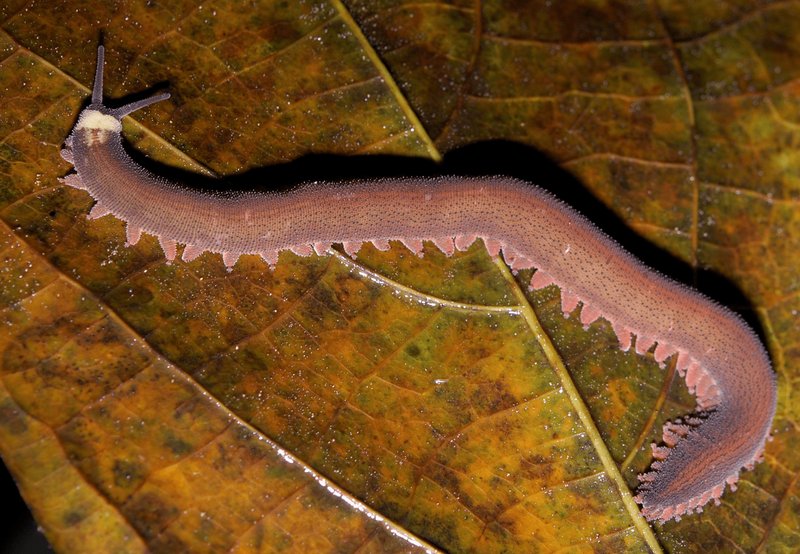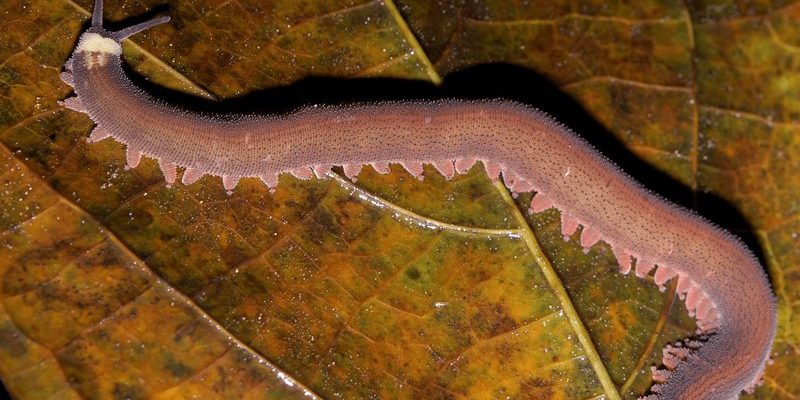
What Are Velvet Worms?
To understand the competition, we first need to know what velvet worms really are. Velvet worms belong to a group of animals called onychophorans, which have existed for **over 500 million years**! They’re primarily found in tropical rainforests, where they thrive in humid conditions. With their soft, segmented bodies and numerous legs, they might remind you of a tiny dragon or a creature from a fantasy book.
These fascinating little guys usually range from 1 to 15 centimeters long and can be various colors, including brown, green, or even blue. They’ve got a cool trick up their sleeve: they can spray a sticky substance to immobilize their prey, which usually includes insects and other small invertebrates. This hunting method makes them effective and competitive predators in their environment.
How Do Velvet Worms Compete for Food?
You might be asking yourself, “Who are velvet worms competing against?” In the lush environment they inhabit, they face competition from other **invertebrates**, such as spiders, centipedes, and various insects. Each of these creatures has its own way of finding food, but velvet worms have a unique edge thanks to their **prehensile slime**.
When it comes to food, they’re not just sitting on the sidelines. Velvet worms hunt at night, which helps them avoid competition with other predators that hunt during the day. By being active at different times, they minimize the chances of bumping into other hungry critters. Plus, their ability to immobilize prey gives them a distinct advantage, allowing them to take down creatures that might be quicker or more agile.
Their diet largely consists of soft-bodied insects – think caterpillars and other invertebrates. This choice of food means they target a niche that not all predators pursue, allowing them to carve out their own space in the overlapping web of life.
Competition for Habitat
Competition isn’t just about food. Velvet worms also need a suitable habitat to thrive. Moist environments like leaf litter or under rocks are crucial for their survival. In these spaces, velvet worms might face rivals like ants, beetles, or even other velvet worms. They often seek shelter during the day to avoid desiccation, and this is where the competition becomes fierce.
These creatures are also somewhat territorial, especially when it comes to finding the perfect hiding spots. You could think of their habitats as prime real estate, where the best spots are highly sought after. The velvet worms that can secure the best microhabitats will have a better chance at survival and reproduction.
But here’s the twist: velvet worms also help shape their environments. By preying on different insects, they keep populations in check, which ultimately can benefit other species in the ecosystem. So, it’s a dynamic balance of give and take among various invertebrates.
Predation and Parasitism
Besides directly competing for food and habitat, velvet worms also have to deal with predation and parasitism. Larger predators, such as birds or reptiles, are known to snack on them, and they have to be on high alert to avoid becoming someone else’s meal.
Additionally, parasites can pose a threat. Some parasitic insects or microorganisms might target velvet worms, which can further impact their populations. In this constant dance of predator and prey, velvet worms have adapted behaviors and strategies to reduce these threats.
This means they’re not just sitting ducks (or worms, in this case). They’ve evolved ways to escape predation, like hiding quickly or using their slime defense mechanism to deter attackers. This defensive strategy not only helps them survive but also gives them a better shot at competing for food and space.
The Role of Velvet Worms in Ecosystems
While velvet worms may seem small and overlooked, they play an essential role in their ecosystems. Their predation helps control insect populations, which can have a positive effect on plant life and overall biodiversity. Essentially, they end up contributing to a balanced ecosystem.
You might say that velvet worms are like the unsung heroes of the forest floor. By maintaining the health of their environment, they help ensure that various species, including other invertebrates, can coexist. This interdependence means their competition isn’t just a struggle for survival; it’s part of a larger web of roles that different organisms play.
Moreover, as researchers study these creatures, they provide valuable insights into evolutionary biology. The velvet worm’s ancient lineage helps scientists understand how life has adapted and evolved over millions of years.
Final Thoughts on Velvet Worms and Competition
So, do velvet worms compete with other invertebrates? The answer is a resounding yes! From vying for food to securing safe habitats, they’re actively involved in the complex dance of life within their ecosystem. They face competition from all angles, but their unique adaptations help them thrive amid it all.
Understanding velvet worms and their competitive strategies not only sheds light on their biology but also highlights the intricate relationships between all living things. Just like in our own lives, competition can spur growth, adaptation, and innovation. And in the world of velvet worms, it’s all about finding that balance in the fascinating, interconnected web of life.
In short, velvet worms may be small, but they undeniably play a significant role in the competition and harmony of the natural world. So next time you think about competition in nature, remember the velvet worm and its unique place in the grand scheme of things.

